#joanna of Aragon
Explore tagged Tumblr posts
Text










Six The Musical as Tweets pt63
#six the musical#six#catherine of aragon#catherine parr#anne boleyn#anna von kleve#anna of cleves#anne of cleves#mary i#mary i of england#maud on the rhythm guitar#maud lane#maud parr#elizabeth blount#bessie Blount#bessie on the bass#mary tudor#juana la loca#juana de Aragón#joanna of Aragon#francis of lorraine#francis i duke of lorraine#François Ier de Lorraine#six the twitter#six the musical twitter#six twitter#Twitter#tweets
22 notes
·
View notes
Text
I love 💕
#katherine of aragon#catherine of aragon#catalina de aragon#mary i#anne boleyn#katherine howard#elizabeth i#joanna of castile
34 notes
·
View notes
Text
They could never make me hate you and I’ll always fight and advocate for you:




1. Catherine of Aragon, Queen of England (my beloved) by Michael Sittow (c. 1515-16)
2. Mary I Tudor, Queen of England by Hans Holbein the younger (c. 1536)
3. Lucrezia Borgia, duchess of Ferrara by Dosso Dossi (c. 1519)
4. Queen Juana I of Castile by Juan de Flandes (c. 1500)
#Catherine of Aragon#queen mary of england#lucrezia borgia#joanna of castile#Anne Boleyn/Elizabeth apologists DNI
8 notes
·
View notes
Text


Alba Galocha and Charlotte Hope in The Spanish Princess as Juana of Castile and Katherine of Aragon
#catherine of aragon#katherine of aragon#catalina de aragon#joanna of castile#juana de castilla#alba galocha#charlotte hope#the spanish princess
70 notes
·
View notes
Text
Thread about Joanna of Castile: Part 8: “The Tragic Departure: Philip's Refusal and Juana's Suffering







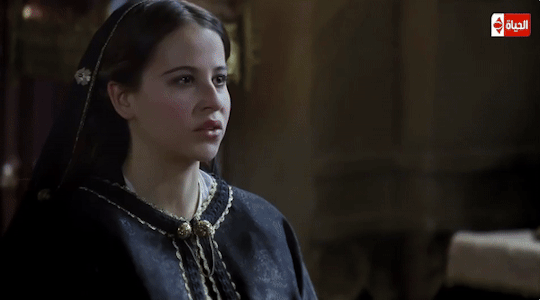





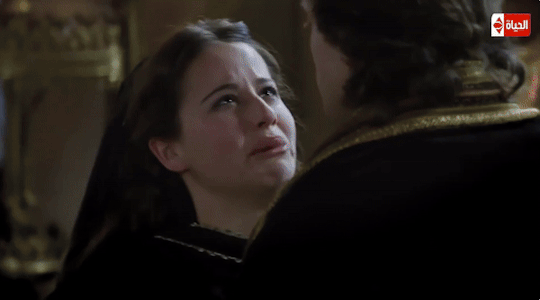
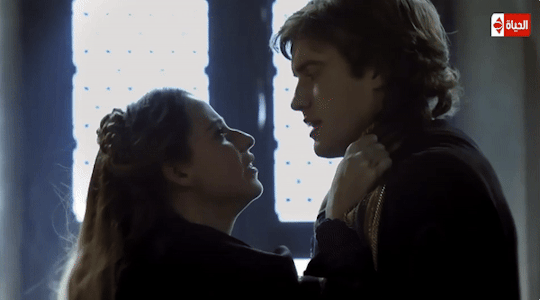

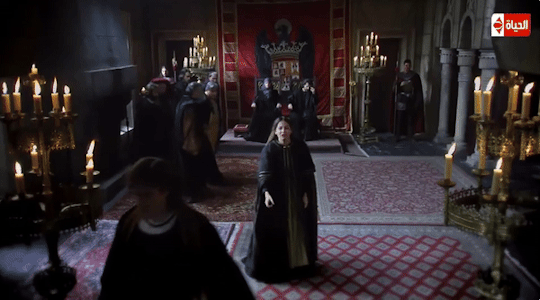
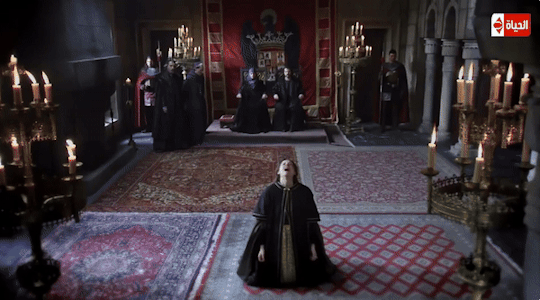


Philips' refusal to stay longer shocked both monarchs and procurators. Castilian procurators warned that if he crossed France during wartime, he would be considered a traitor, exposing himself to the mercy of his enemies and endangering Juana's life. This would not only undermine the monarchs, but also the interests and honour of all Spain, and would cause great agitation. The Aragonese procurators appealed to Philip in the same way. Although the monarchs persuaded Juana to remain for the birth of their fourth child, Philip left Madrid on 19 December.
Martire was dismissive of Juana, who showed no sign of 'royalty or courage'. Burton, perhaps familiar with Martire’s letters, later summarised the situation in his opus on melancholy.
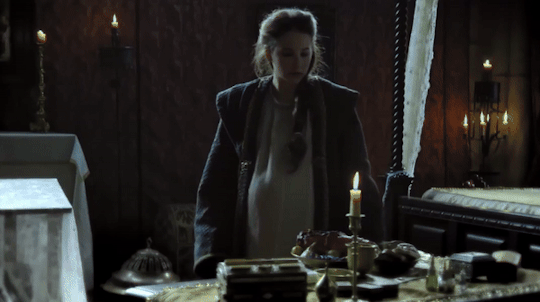

Juana was:
“So impatient and melancholy upon [Philip’s] departure, that she would scarce eat her meat, or converse with any man; and though she were with child, the season of the year terrible, the wind against her, in all haste would to sea after him.”
Historians have also attributed this distressing episode to Juana's personal obsession with Philip, underestimating the broader political aspect. As with all female royals, Juana was born into a highly political setting. Even though she wasn't power-hungry, honour and reputation mattered to her. She was not only affected by her separation from her husband, but also by his conduct towards her. As a result, Juana, who wore violet for her reunion with Isabel in May, bid Philip farewells in December.
Almost certainly, this signalled more than personal grief. She was heir to the many realms of Castile and Aragon and beyond personal grief and dishonour, her mourning signalled a political calamity.
The idea that Philip had run from his commitments as soon as the oath-taking was over made people doubt the succession, which made it very unlikely that the Spanish kingdoms could be ruled by princes who were also archdukes of Austria and dukes of Burgundy. This left Juana with a difficult decision, although not necessarily a resolute one:
To abandon her husband and children and remain in Castile to confront an uncertain future; or, in the event of Isabel's demise, to allow Fernando to continue to lead until Charles reached adulthood.
Considering the magnitude of negative remarks regarding Juana's conduct, it is noteworthy to recall that throughout the spring, she remained faithful to her royal duties. She made various acts of religious patronage, including visits that January to the Clarisan monastery of Rejas. Another sign that she supported the Franciscan order comes from a note written by a man named Francisco Segarra, who was hired by the kings to inspect monasteries in Aragon in 1493. Segarra thanks Juana for an act of charity and for her letters, in which she told him not to hesitate to ask her for more help. He hopes to be able to visit her soon.




On 10 April, she brought comfort to her parents with the birth, at Alcalá de Henares, of a second son, Ferdinand, whom she agreed to leave in Castile. Sandoval describes Juana’s pleasure at the birth and the (fattering) sermon about her that Villaescusa preached at the baptism. Zurita refers to the:
“Great respect that the princess always had for the queen.
Sources: Fleming, G. B. (2018). Juana I: Legitimacy and Conflict in Sixteenth-Century Castile (1st ed. 2018 edition). Palgrave Macmillan.
Fox, J. (2012). Sister Queens: The Noble, Tragic Lives of Katherine of Aragon and Juana, Queen of Castile. Ballantine Books.
Gómez, M. A., Juan-Navarro, S., & Zatlin, P. (2008). Juana of Castile: History and Myth of the Mad Queen. Associated University Presse.
#joanna of castile#juana i of castile#philip the handsome#juana la loca#isabel#irene escolar#Raúl Mérida#Philippe le Beau#Felipe I de Castilla#Felipe el Hermoso#Philipp I. von Kastilien#Filips I van Castilië#Johanna van Castilië#Jeanne la Folle#european history#johanna van castilie#catherine of aragon
10 notes
·
View notes
Text
Joanna I & Catherine of Aragon || HURRICANE
youtube
#juana de castilla#joanna of castile#juana i of castile#juana i de castilla#katherine of aragon#catherine of aragon#catalina de aragon#Youtube
13 notes
·
View notes
Note
It’s the fact that there actually is a collectors coin for Leonor’s birthday 😭😭 is 🇪🇸 or the original anon got a secret schedule from casareal? 😭😭 honestly I needed a good laugh today and that was hilarious to wake up to. Great work guys! All in all the coin looks really great!! Secondly here is my question, if you could meet any Spanish royal, from any period, could be Isabel of Castile or even Leonor, spend a week with them and ask all the questions you could…who would you pick? Let’s time travel just a bit. I think I would go with Isabel of Castile. Or I would see Charles, the last king of the Habsburgs in Spain before the house of Borbón. Would have liked to see how all that went down.
That is such a coincidence!!! Casa real has been feeding us a lot of good Leonor content lately and this whole thing is like the biggest coincidence like ever!
I think that I would definitely go back to see Catherine of Aragon and her sister Joanna and to give both of them a BIG BIG BIG hug because they honestly deserve it and I would definitely give Joanna some anxiety meds lol. Also seeing Charles II sounds fun too. He was one of the worst cases of inbreeding in the Hapsburgs and maybe in all of the royal history of Europe and I would love to see how he functions daily and to accurately see how messed up he was because he was REALLY messed up.
Thank you for asking and new chapters of WOTC are coming soon!
#answered ask#wotc#leonalix#spanish royal family#catherine of aragon#joanna the mad#joanna of castille#King Charles ii of spain#house of Hapsburg
5 notes
·
View notes
Text
This is closeup on one of Sittow's paintings

#historical portraits#catherine of aragon#isabella of castile#joanna of castile#maria of aragon#isabella of aragon#virgin mary#sittow
5 notes
·
View notes
Text
This book focuses on Isabella I of Castile, her mother, Isabella of Portugal, and her two oldest daughters Isabella of Aragon and Joanna of Castile.
#isabella i of castile#isabella of portugal queen of castile#isabella of aragon#joanna of castile#books#medieval history#women’s history#medieval women
1 note
·
View note
Text

Joanna Alexis Jones (she/her) as Catherine of Aragon
1 note
·
View note
Photo



This vivid yellow and black costume was very likely inspired by the extant “Prunkkleid” of Kurfürst (prince-elector) Moritz of Saxony (1521-1553) held at the Dresden Armory. The robe was restored via the Swiss Abegg Foundation over a period of seven years before it was exhibited to the public again in 2010. The costume was made by Joanna Eatwell and her team for Damian Lewis as King Henry VIII in the 2015 miniseries 𝑾𝒐𝒍𝒇 𝑯𝒂𝒍𝒍, were he dressed in yellow alongside his new wife Anne Boleyn upon the announcement of the death of Katharine of Aragon. The costume was spotted again in 2021 on Mark Stanley as King Henry VIII in 𝑨𝒏𝒏𝒆 𝑩𝒐𝒍𝒆𝒚𝒏. Find out where else this costume has been spotted, and learn more about the Prnkkleid at Bit.ly/TudEliz197
166 notes
·
View notes
Text










Six The Musical as Tweets pt70
#six the musical#six#catherine of aragon#katherine howard#catalina de aragon#anna of cleves#anna von kleve#juliana la loca#joanna of castile#elizabeth blount#bessie on the bass#bessie#jane grey#jey#elizabeth i#elizabeth tudor#liz#lady rochford#rocky on the microphone#rocky#jane Boleyn#edward tudor vi#mary Livingston#mary seton#mary beaton#joan Eustace#joan Fitzpatrick#Edward vi#six the twitter#six the musical twitter
13 notes
·
View notes
Text
Why George Russell's Disqualification is Really Napoleon's Fault
Alright motorsports fans, with the end of the Belgian Grand Prix (held before the summer break this year because the F1 calendar is becoming increasingly cursed year after year) F1 enters its summer break. NASCAR and Indycar are on an Olympic break thanks to both series currently being on NBC (who is the US broadcaster of the 2024 Paris Olympics), and MotoGP doesn't come back from its second summer break until next week.
So what the hell am I going to talk about in this blog.
Well, George Russell won the 2024 Belgian Grand Prix until he got disqualified for having an underweight car. Some people have theorized that Mercedes made a mistake and underfueled him, others have said that George switching to a one-stop meant he lost out of valuable pitlane speed time, using up more fuel, still others have theorized it's down to the unique procedures at Spa - where drivers turn around after turn one and drive the wrong way into pit exit - that meant Russell didn't have the chance to pick up rubber and thus increase the weight of his tyres.
I, meanwhile, have a different theory.
George Russell could only have been disqualified from the Belgian Grand Prix because of Napoleon!
Yes, really.
How, you may ask? Well, the Napoleonic Wars created the conditions that ultimately allowed for the the Circuit de Spa-Francorchamps to exist. Thus, the long lap that causes F1 cars to deliberately underfuel for the race, the unique post-race procedures due to track length, and choice of this area as the venue for the Belgian Grand Prix...none of that would've been possible with Napoleon.
Our story, as all good motor racing stories do, begins in 651 when the Benedictine Monk, Saint Remaclus of Stavelot founded the dual Abbeys of Stavelot and Malmedy (which you may recognize from corner names of the Spa-Francorchamps circuit, as these are neighboring villages).
These abbeys wound gain more territory in 747 when Carloman, the Majordomo of the Franks and uncle of Charlemagne, abdicated and became a monk himself.
They would be enlarged again in 882 by Charles the Fat, Holy Roman Emperor, in compensation for the Normans raiding and burning down both abbeys the previous year.
Thus, the Princely Abbey of Stavelot-Malmedy became one of the many mosaic pieces of the complex historical mindscrew that is the Holy Roman Empire, holding territories along what is now the Belgian-Germany border. Back then though, they were a rather significant ecclesiastical territory, holding land where Lothringia met the Low Countries.
This was the exact region where, in the late 15th and early 16th century, the Dukes of Burgundy attempted to create their own sovereign territory, using the chaos of the Hundred Years War in France to become lords over Luxembourg, Hainaut, Flanders, Brabant, and Holland. Soon enough, the Princely Abbey of Stavelot-Malmedy was one of only three independent states remaining in the region.
It was Stavelot-Malmedy, an ecclesiastical state which thus couldn't easily be absorbed into secular Burgundy.
Then the Prince-Bishopric of Liege, which again, was an ecclesiastical state which meant it would be a tricky proposition for a Catholic Duke of Burgundy to try and conquer.
And finally the Duchy of Bouillon, which was a downright weird state in that the title was a secular Duchy that was sold to the Prince-Bishopric of Liege, and in the late 17th century became a sovereign possession of the La Tour d'Auvergne, a French noble family.
In any case, upon the death of the Burgundian line, their territories were divided between France, the feudal overlord of Burgundy, and Philip the Handsome (the son of Mary the Rich, the last Duchess of Burgundy, and Maximilian von Habsburg, an Austrian Prince).
Philip the Handsome was in turn married to Joanna the Mad (we should bring back the random ass nicknames people used to get in the past btw), the Queen of Castile and Aragon. Their son, Charles, would thus inherit Spain, the Burgundian possessions in the Low Countries, and, eventually, Austria and the title of Holy Roman Emperor. Yeah.
So thanks to Charles V rolling a natural 20 in his birth dice roll, Stavelot-Malmedy was suddenly one small little ecclesiastical holding squeezed between the two halves of what would eventually become known as the Spanish Netherlands.
Then, the northern half of the Spanish Netherlands decided they didn't want to be Catholic anymore. This ushered in the Dutch Revolt of the 17th century, a bloody religious struggle concurrent with the Thirty Years War and the Portuguese War of Independence that marked the end of the golden age of Spanish power.
Come 1700 and Charles II of Spain (Charles V was Charles I in Spain, regnal numbers get weird when you rule over half of Europe), the last Habsburg King of Spain, dies an inbred and infertile mess. The Low Countries become a battleground in the War of the Spanish Succession.
On one side, France and Spain, as Charles II had declared his grandnephew, the French Prince Philip of Anjou, threatened to tip the scales of western Europe towards the Bourbon dynasty.
On the other side, a grand coalition of Austria, England, the Dutch Republic, Prussia, Portugal, and Savoy aimed to contain French power.
This was the War of the Spanish Succession, and the war would be transformative for the southern Low Countries. The Spanish Netherlands went back to Habsburg hands and became the Austrian Netherlands, meanwhile, the Duchy of Cleves, just to the east, was returned to Prussia following a French occupation.
The Dutch Republic in the north was Protestant, the Austrian Netherlands were Catholic, and Protestant Prussia was emerging on the scene as well. This would more or less lay the stage for the Napoleonic Wars, where the armies of the French Republic and later the French Empire would occupy all of this land. Gone were the Austrian Netherlands, gone was Stavelot-Malmedy, Liege, and Bouillon, and gone was Prussian Cleves.
Instead, the land surrounding Spa-Francorchamps would became part of the French Department of Ourthe, named for one of the principal rivers of the region.
However, much like the War of the Spanish Succession, numerous grand coalitions would rise up against Napoleon, the primary participants being Great Britain, Austria, Prussia, the Dutch, and Russia. In 1815, they would finally defeat Napoleon once and for all, and the Peace of Vienna would shape the new postwar Europe.
Of the old Princely Abbey of Stavelot-Malmedy, Stavelot would go to the United Kingdom of the Netherlands (the new kingdom combining the modern-day Netherlands, Belgium, and Luxembourg), while Malmedy would go to the Kingdom of Prussia.
The border would be a minor tributary of the River Ambieve known for its reddish water. The name? Eau Rouge.
Fast forward to 1830 and the largely Catholic southern Netherlands revolt from their Protestant overlords in the north and demand the creation of a Kingdom of Belgium. Following a great power conference in London, the Belgians would get their wish, and in 1831, the Kingdom of Belgium was born, including Stavelot.
The Dutch would recognize Belgium Independence in 1839.
Eau Rouge was now the Belgian-Prussian border.
Come 1871, and Prussia becomes the German Empire.
Come 1914, and this border region is amongst the first overrun by the Germans in World War I. Spa becomes a major German field hospital from the get-go, and by 1918, Spa is the German military headquarters and the primary residence of Kaiser Wilhelm II.
Upon the German surrender in 1918, Kaiser Wilhelm would abdicate and leave for the Netherlands, meanwhile, France and Belgium - the countries that wore the greatest scars from World War I - would demand harsh reparations from Germany. For Belgium, this would include Eupen-Malmedy.
Thus, the great majority of the old Princely Abbey of Stavelot-Malmedy was now within Belgian borders.
Jules de Thier, owner of the La Meuse newspaper in Liege, found this new territory to be the perfect site for a high-speed triangular race track in 1921. The race would begin in old Belgium, with a run to the old border - originally they would veer right, pass through Ancienne Douane - the old customs office on the Belgian-Prussian border - then back left to rejoin the track on the other side of what is now the Eau Rouge corner - then run through the German territories.
Burnenville and Malmedy were in old Germany, then swing back at the bottom of the track, crossing back into pre-war Belgian territory in time for the Masta kink, then Stavelot, Blanchimont, and La Source would all be in pre-war Belgium as well. Cross the start-finish line after La Source (as it was back then) and then cross into former Germany again on the next lap.
Thus, the Belgian Grand Prix was born in a region that had only just been annexed from Germany.
This led to Spa again becoming a battlefield during World War II, but with the borders restored after the war, Spa would again be in Belgium and, from 1950, the Belgian Grand Prix would become a traditional staple on the Formula One calendar.
Spa-Francorchamps would be transformed a couple of times over, not assuming its current form until 2007, but it was born from the great Napoleonic shakeup in European politics.
The ancient double abbeys of Stavelot-Malmedy were separated for the first time in 1200 years, and it would take another century for them to be reunited in modern Belgium.
So yeah, if you're mad that George Russell was disqualified, blame Napoleon...or Kaiser Wilhelm II I suppose, whichever one fits your fancy.
Oh, and by the way, Lewis Hamilton takes a record-extending 105th win following his teammate's disqualification, so I suppose Mercedes still has something to be happy about.
#motorsports#racing#f1#formula 1#formula one#yeah this is just a self-indulgent blog from a history major#no one is gonna care about this blog but I had fun writing it#spa francorchamps#belgian gp 2024#belgian grand prix
21 notes
·
View notes
Text




24 notes
·
View notes
Text
I need help finding Cabaret West End audios/videos
Looking for:
*Cabaret with Aimee Lou Wood and John McCrea
*Cabaret with Callum Scott Howells and Madeline Brewer
Cabaret with Fra Fee and Amy Florence Lennox
* = most wanted
I have to trade: (all are audios)
Wicked (West End): November 2023, Alexia Khadime as Elphaba, Lisa-Anne Wood u/s Glinda
Six (West End): May 2024, featuring 3 alternates: Hannah Lowther as Howard, Naomi Alade as Boleyn, Gabriella Stylianou as Seymour. Main cast: Nikki Bentley as Aragon, Reca Oakley as Cleves, Janiq Charles as Parr
Romeo & Juliet (West End): May 2024, Tom Holland as Romeo and Francesca Amewudah-Rivers as Juliet
Rogers & Hammerstein 80th Anniversary Concert: My Favorite Things: December 2023, featuring: Aaron Tveit, Joanna Ampil, Michael Ball, Maria Friedman, Daniel Dae Kim, Audra McDonald, Julien Ovenden, Lucy St. James, Marisha Wallace, Patrick Wilson. Special Guests: Andrew Lloyd Webber and Rita Moreno
Les Misérables (West End): April 2024, Milan van Waardenburg as Jean Valjean, Stewart Clark as Javert
Cabaret (West End): February 2024, Cara Delevingne as Sally Bowles and Luke Treadaway as the Emcee
Cabaret (Broadway): Eddie Redmayne as the Emcee, Gayle Rankin as Sally Bowles, Bebe Neuwirth as Fraulein Schneider
Hadestown (West End): May 2024, Dónal Finn as Orpheus, Grace Hodgett Young as Eurydice and Melanie La Barrie as Hermes
Hadestown (Broadway): July 2024, Jordan Fisher as Orpheus and Maia Reficco as Eurydice
A multitude of Moulin Rouge Audios
Moulin Rouge (West End): Jamie Muscato’s Last show (Oct 14, 2023)
Jamie Muscato in Moulin Rouge September 2024 (good quality audio)
U/S Christian Davide Fienauri May 2024
Dom Simpson as Christian November 2023
Broadway Moulin rouge
Aaron Tveit, Natalie Mendoza May 2022
Derek Klena and Tasia Jungbauer as Satine May 2023
Misc Moulin Rouge
Boston 2019 with Aaron Tveit as Christian and Karen Olivo as Satine
Tour: Connor Ryan as Christian
Please please let me know if you have any Cabaret west end audios/videos!! 🫶🫶
#cabaret#kit kat club#west end#aimee lou wood#john mccrea#callum scott howells#madeline brewer#mason alexander park#maude apatow#layton williams#rhea norwood#fra fee#Amy Florence Lennox#wicked#six the musical#hannah lowther#romeo and juliet#tom holland#francesca amewudah rivers#aaron tveit#les mierables#musical theatre#musical#broadway#cara delevingne#hadestown#Jordan fisher#maia reficco#moulin rouge#slime tutorial
17 notes
·
View notes
Text

The Queen is Mad is a musical psychodrama inspired by the true story of Joanna of Castile.
Cast
Natasha Hoeberigs (Joanna)

Alan Vicary (Ferdinand)

Brian Raftery (Philip).

3 notes
·
View notes